In November, I walked for eight days along the Rennsteig, a famous, old ridge road in Thüringen, Germany. I’ve been doing solo hikes every year since 2018, but this time I did something new: I set up a short-lived “pop-up” email newsletter, and published photos, stories, rough essays from the road.
This post is about the pop-up newsletter as a format.
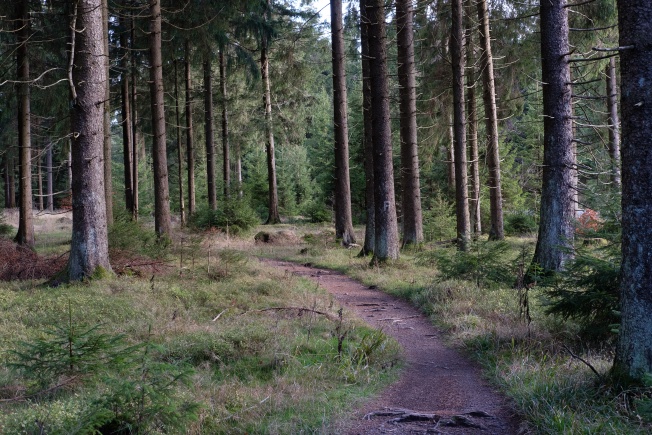
The pictures in this post will be unrelated hike photos
Why a newsletter?
In short, I did not write as much in 2022 as I would have liked to, and in late October I decided to resolve that.
On the landing page for the project, I described the why like this:
I’ve had stories – about mountains, walking, forests, and the interconnections between them all – stuck in my Drafts folder for years now, and in an effort to condense “everything” into “something”, I’m bringing a laptop [on this walk]. I’m not expecting to be able to “bang out” high-quality essays from the road while walking 20km a day! But I’m hopeful that the rigour of the process will help crystallise the ideas. You’re a part of that – once I’ve publicly said that I’m going to write things, once people have signed up to receive them – then I kinda have to do it? You’re an accountability partner, if you will.
I had a vague idea that whatever I wrote on the trip would be somewhat rusty or temporal, but I’d uncover themes, and turn them into blog posts somewhat later (a more permanent medium). I am less sure whether I’ll do that or not, now. I already did the fun bit of thinking through the ideas and throwing them out into the world and seeing which of them felt good. Going back and polishing those ideas – sheesh. Sounds like work.
The actual goal was to create something beautiful. But that is an oppressive goal; it is too subjective, it requires a certain audacity. So rather than keeping my eyes on a goal like that, I allow them to slide out of focus slightly, and settle upon “just publish something everyday”. I remind myself that I am capable of producing beautiful work, but I do not work towards beauty. I work towards quantity1.
Parameters
Practically, the project went like this:
I put up a landing page with a signup form about a week before the walk started. Wrote something explaining why people might be interested; linked to previous work. Tried to develop some kind of argument as to why someone would want to sign up for something that would bombard them with emails for a week.
I told people about that landing page a few days before the walk started – posted it to my Instagram stories twice, sent an email to blog subscribers, told a small group of my colleagues about it, texted friends the link when they asked what I had planned for my holiday.
I sent an email the day before the hike started to test out the process / technology, and give a sense of ceremony. “Hey! the project is starting tomorrow, get ready!”
Each day, I’d walk. Then, when I got to my hotel for the night, I’d import all the photos I’d taken, edit them quickly, write something, and send it out. This took anywhere between one and five hours, depending on how late I arrived and how much energy I had. If it looked like something was going to be too difficult to write in an evening, I’d punt it for another day and think about it on the trail.
Weeks later, I wrote and sent a more polished ‘final essay’, which also acted as a goodbye and a conclusion. I then deleted the email list along with all its subscribers. In the final email, I told the subscribers that if they want more stuff like this, they can sign up for my regular mailing list (hello, if that was you!).
This is a format I lifted from Craig Mod, who writes popup newsletters while doing long walks in Japan. But I can locate it within a broader theme of wanting to tell stories about adventures – In 2017, I built is fabian still alive dot com for some hiking in Georgia and Armenia; in 2018 I collated a set of photos from my E5 hike and stuck them in a Facebook album (now here on this website, given I no longer have a Facebook account). On more recent hikes, I’ve done things that are smaller scale / more intimate – printing a set of photos and mailing them to my Grandma with notes scrawled on the back, texting photos to a handful of friends at the end of each day, sending friends voice messages from the road.
Of the formats I’ve experimented with so far, the email newsletter is the most demanding, but it’s also really fun.
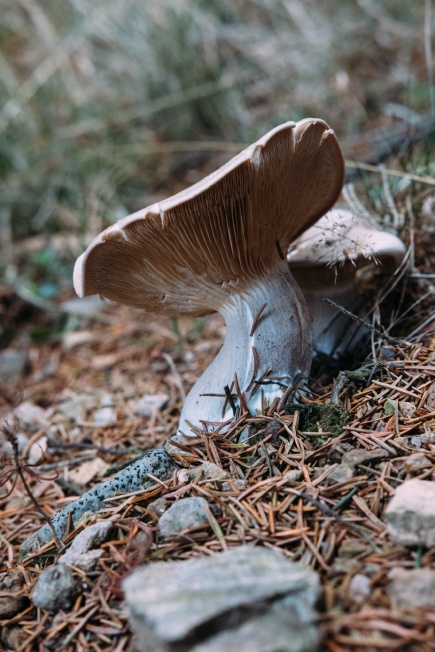
Unrelated mushroom
Technically
I did the emails and subscriber management with Campaign Monitor for €9 / month. I thought about using Buttondown or Substack, but I wanted more control over the formatting. Campaign Monitor has a graphical email editor, and I used that for authoring the emails. I tried to get it to integrate with my blog software, but there’s no way that was going to happen in the two weeks between deciding I was going to do the popup newsletter and the day the hike started.
I rolled the landing page myself, but you could also do that with a site-builder like Squarespace or Wix, or just use the one that comes with your newsletter builder. The Campaign Monitor one is not very good though.
Anticipating the things that could get in the way
There is an intrinsic tension in producing work like this – you want to stretch yourself, but not so far that the project feels insurmountable.
First: you need to Silence The Critical Voice that is telling you that your work isn’t good enough; that you are wasting everyone’s time. Focussing on publishing every day instead of publishing something excellent is a start, but you still need to take further steps to ensure that you’ll actually press the send button on the email after you’ve written it.
There are loads of ways to do that – one is to keep your audience small; to limit it to people who like your work already, to not pursue reach too aggressively (more on that below).
Another option is to set expectations with your readers; to make it extremely clear that you all are embarking on an experiment together. On the signup form I used language like “draft-quality”, and tried to frame it as a conversation, but mostly to make it feel ok to me to publish less edited work.
You can remind yourself that if someone doesn’t want to read your work for a day, they can just not read your work for a day. You can adopt a writing style rooted in curiosity - use phrases like “I wonder”, start sentences with “maybe”, try to be subjective instead of authoritative. You can write a note to yourself, stick it on your laptop, something like:
It doesn’t need to be perfect. It won’t be perfect. What even is perfect.
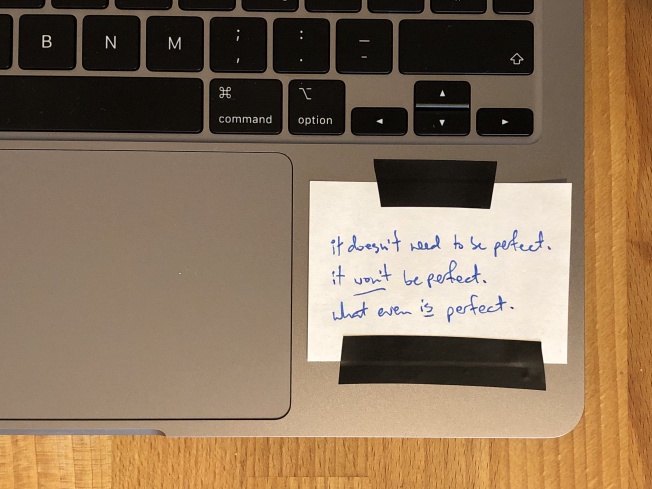
Probably good advice generally.
Second: Create Escape Hatches for yourself, figure out ways to stick to your commitments and keep the momentum going, even when it’s hard, even when you’re exhausted. Escape hatches are tools for resilience. There was a day where I wrote only, “I am exhausted, here are some photos”. I pre-wrote a few paragraphs about trail mix as “emergency content” which I didn’t end up using. I planned some of these escape hatches before the trip started, and some of them formed on the way.
Third: Amplify that Curious Voice; the one that tells you what to explore and what to write about. The voice you have prior to self-censoring; inquisitive and imaginative. I am less clear on how to amplify this voice, but I think the accountability of having the newsletter every day did the bulk of the work here. One day on the trail I wrote:
I will explain by analogy: a problem with foraging for mushrooms semi-regularly is that you develop mushroom vision, a compulsion to scan the ground for evidence of forageables, even when you’re just trying to go for a walk or something. I’ve had something similar over the past few days – let’s call it story vision, something-to-write-about vision…
Part of amplifying this voice is simply ensuring that you don’t self-censor. In the same way that a child will ask ‘why’ repeatedly and to absurdity, the Curious Voice will run in a spiral, as long as you don’t cut it off. It’s important to be able to ask questions that don’t make sense yet. I think this is different to silencing the Critical Voice – the Critical Voice is more about the final product, the Curious Voice is more about the raw inputs. I self-censor very quickly in the presence of other people; walking alone made it possible to allow those feedback loops to develop, as did not knowing who was on the mailing list (more on that later).
Boredom is helpful – my phone was mostly in flight mode while walking, and I had no music playing while walking. There were a few times when I had a song stuck in my head – you’d better believe I was loudly singing Road to Nowhere in the middle of the forest one misty morning – but singing on the road is different; as soon as something captures your attention you stop. Boredom is also somewhat easy to achieve just by way of your days involving a lot of walking.
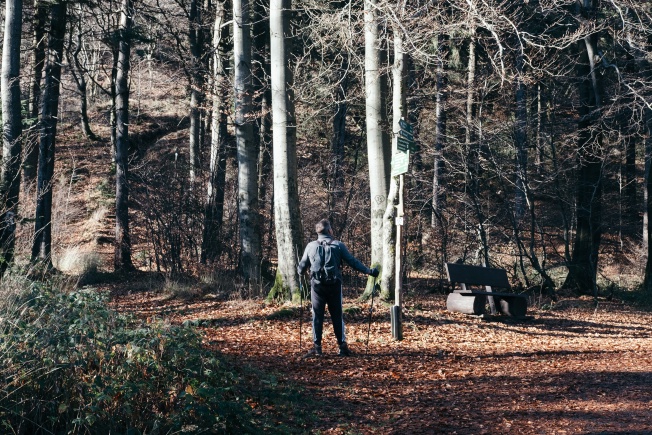
🎵 We’re on a rooooad to no-where 🎵
A small, trusted, anonymous audience
In Escape, Marie Le Conte writes:
The problem with, say, Twitter, is that you can have a set audience and feel you can safely make a joke about X, because the audience in question contains no Xs. If, however, your tweet becomes popular enough to get retweeted even a few times, it will get a bigger audience. With each new retweet, the likelihood that the tweet will eventually reach an X grows. When it does, it will feel like a personal attack to X, which is unreasonable because they were not part of the original audience, but also reasonable because it did end up on their timeline.
The nice thing about an email newsletter is that the people who sign up are probably people who are already looking at your work with kindness. Fans. Friends? People who have been following along for long enough to treat your half-baked ideas with compassion, rather than just yelling at you for being a jerk on the internet.
This is slightly different to the situation Marie describes; hers is rooted in a joke that suddenly becomes at someone’s expense, mine is rooted in a desire for a relatively kind audience and the fact that the internet has taught me that strangers are ruthless. I didn’t know exactly what I’d write about – I knew it would probably be something at the intersection of walking and human nature, maybe something about nuances in forest ecosystems. But having a foundation of “people who are interested” feels safer than just publishing stuff broadly to the internet, where it quickly stops being under your control, especially when you’re unsure of the direction that the work will take.
I kept the list anonymous – I knew there were 20 people on it at the start, and 31 at the end, but I never looked at who was on it. This was helpful; I didn’t want to know who was reading because I didn’t want it to influence the way that I was writing. I wanted to give the Curious Voice room to spiral; I didn’t want to worry about what [imagined archetypes of] colleagues, or experienced hikers, or philosophers, or religious folk would think. I think this is an anti-anxiety hack more than anything else, but I liked it and I would do it like this again.
I did eventually discover the identity of some of the recipients – I found out who some of my readers were because they wrote me back occasionally with a question or observation. Receiving a reply email was a very pleasant surprise and it happened infrequently enough that it didn’t compromise the aforementioned goals. Knowledge of Who Was On The List did cause me to change the word “fucked” to “wrecked” in the final email, though 💀.
People weren’t really sure how to engage with the format
Email newsletters (and especially, email newsletters where the author is trying to set a relatively intimate tone) are a slightly weird format, and people don’t always know what to make of them. I was worried about this – I had someone confess to me that all the emails were still sitting in their inbox, unread (dude, that’s fine, that was absolutely part of the contract). I had a few friends text me about the day’s email, I had a friend of a friend write in and say “I hope it’s ok to ask questions but how do you plan a trip like this?” Yes! Please ask questions. I tried to give people permission to do this on Day 1 by soliciting names for the pebble I carried from the start of the hike (and eventually threw into the river).
Email newsletters sit in a weird place socially – are you allowed to reply to them? Are you allowed to enter into conversation with someone based on something they wrote you?
I think so, yes; though if I think of the snail-mail analogue:
- it’d be normal to reply to a hand-written, hand-addressed letter
- it’d be somewhat normal to reply to a Christmas mailing that had a life update in it (was this a thing at some point in your life? My family would send and receive these tucked into mailed Christmas cards in the 90s / early 2000s).
- it’d be extremely weird to reply to a catalog, or a newspaper.
Email newsletters straddle the latter two categories, and which bucket they fall into probably comes down to specifics of the newsletter – a contract between readers and an individual writer, whether explicit (“feel free to reply to this anytime”), or implicit (by e.g. cultivating a sense of intimacy so that it feels like a letter from a friend). I know I’d be less likely to reply to a Substack newsletter (which feels pseudo-professional) than I would be to reply to a newsletter written in Comic Sans, or formatted with big HTML energy.
I was also interested in seeing whether this format worked to further conversations, and it didn’t work so well toward that goal. In one email, I asked readers “What makes a pilgrimage a pilgrimage? How is it different to a journey?”, and explicitly invited responses, but did not receive any. I think there were probably about a half-dozen people on the mailing list who could’ve given good answers to this. But – there’s an art to encouraging people to really engage with a topic; there’s a format for it, there’s a medium for it – and a question midway through an email newsletter seems to not be particularly inviting.
Dear Reader, why not? I am apparently relentless in trying to make this a thing, if you have thoughts, email me please.
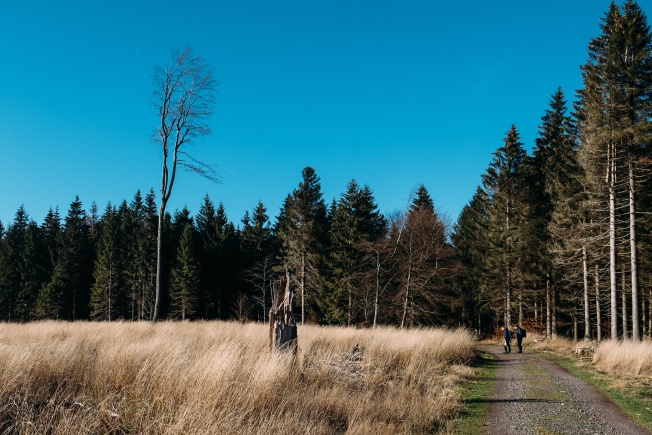
Probably not a metaphor
I’ve debated whether to link the actual newsletters that I wrote while on the hike or not. On the one hand, it feels strange to write so much about a thing without making that thing visible – how do you learn from example when the example is inaccessible? On the other hand, the fact that it was temporary is part of what made it special. The final essay will probably end up on this site eventually, though, so what the heck, here’s a link.
Running this tiny publishing experiment was one of the highlights of my year. If you’re contemplating something similar – that’s exciting! I’d love to hear about it, and please feel free to reach out with any questions. ❤️
Some good pieces about targeting quantity instead of perfection are Darius Kazemi’s 2014 XOXO talk, “How I Won the Lottery”, and this story about a film photography class referenced in Atomic Habits. ↩︎